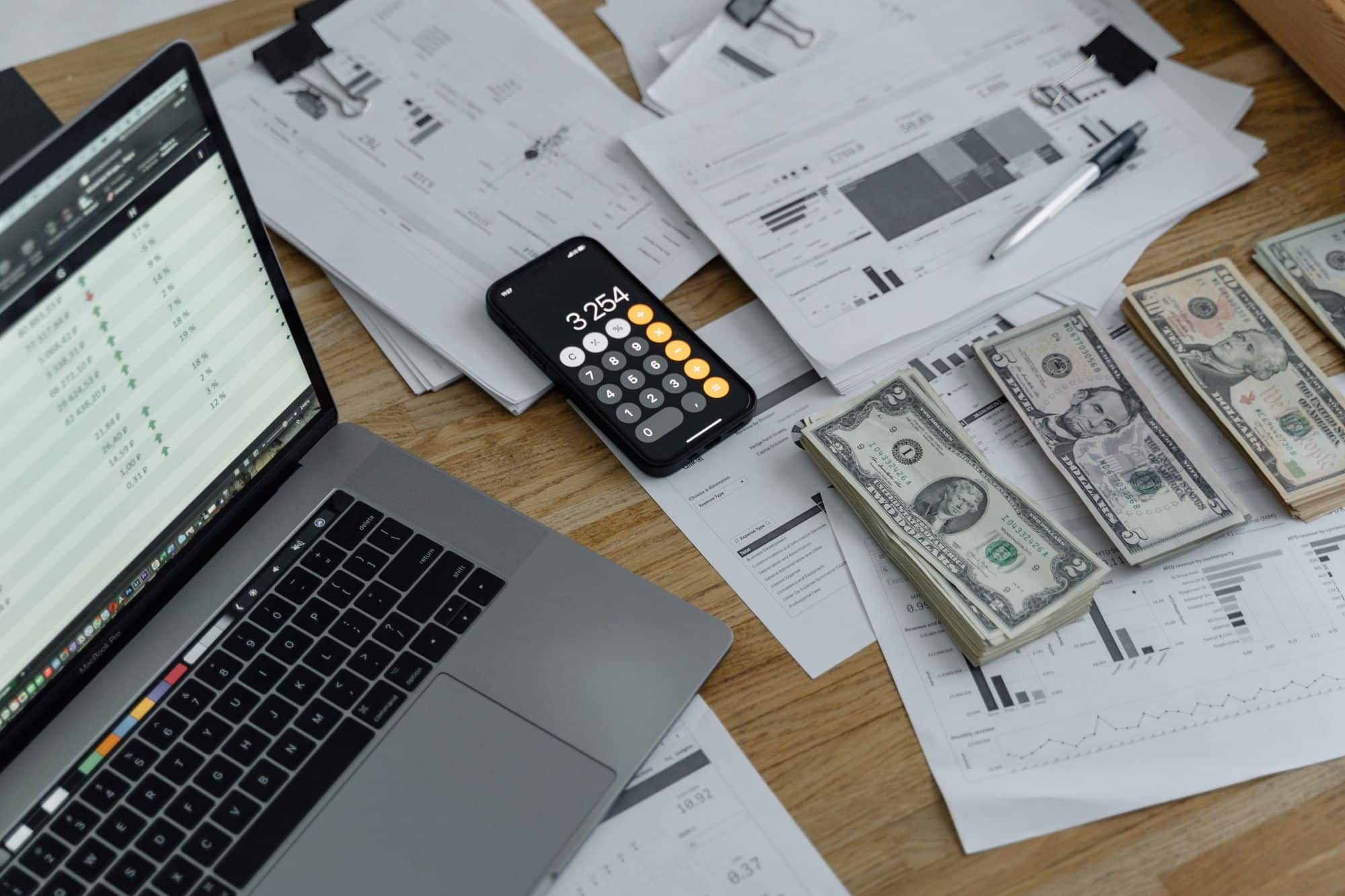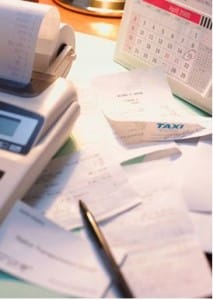How to Estimate Uncollectible Receivables

Estimating uncollectible receivables is like being a detective. It’s the process of predicting money a company won’t be able to collect from customers. By understanding this, companies can make decisions that affect cash flow and profitability. How to Estimate Uncollectible Receivables.
Uncollectible Receivables Estimating
Methods for predicting uncollectible receivables include the aging method. This categorizes outstanding invoices by age and uses different collection percentages for different lengths of time. The percentage of sales method uses historical data to find the average percentage of sales that become uncollectible.
This percentage is applied to current sales figures. Industry benchmarks are also used as a reference. Comparing data with industry averages helps identify patterns that could impact collection rates.
In Ancient Mesopotamia, merchants set aside reserves for bad debts to recognize the risk of extending credit. This practice still continues today, showing how essential it is for businesses to predict and manage uncollectible receivables.
Estimating uncollectible receivables requires analytical skills and intuition. By using data and trends, companies can navigate this financial challenge and ensure cash flow for the future.
Definition of Uncollectible Receivables
Uncollectible receivables are unpaid debts that a company can’t collect from its customers. They’re often seen as bad debts or non-performing assets, as they don’t contribute to cash flow and can hurt financial stability.
When customers don’t pay debts within the agreed-upon time, it’s an uncollectible receivable. This can happen due to insolvency, bankruptcy, or simply lack of willingness to pay. No matter the cause, uncollectible receivables are a loss and need to be managed well.
Companies use different methods to estimate uncollectible receivables. The allowance for doubtful accounts method involves creating a reserve fund based on historical data and expected losses. This serves as a precautionary measure and helps minimize financial risks.
The direct write-off method is simpler, but it doesn’t give an accurate estimation of losses and can distort financial statements. So, many companies prefer the allowance for doubtful accounts method.
To manage uncollectible receivables, companies should establish clear credit policies and guidelines before extending credit. This includes credit checks, setting limits, and reviewing payment histories.
It’s essential to keep open communication with customers to resolve payment issues quickly. Offering flexible payment options and interest charges on late payments can be incentives for timely payments. Outsourcing debt collection services and seeking legal help can also aid in recovering outstanding debts.
Importance of Estimating Uncollectible Receivables
Estimating uncollectible receivables is vital for businesses. It helps them make informed decisions about cash flow and credit policies. It also allows companies to plan for potential losses in revenue and prepare reserves for doubtful accounts.
Accurate estimation of uncollectible receivables is essential for reporting accurate financial statements. It ensures that balance sheets reflect the realizable value of outstanding receivables. By regularly reviewing and updating estimations, businesses can maintain transparency with stakeholders.
The importance of estimating uncollectible receivables cannot be overstated. It impacts risk management strategies and credibility with stakeholders. Here’s an example to illustrate this: An online retailer neglected to estimate their uncollectible receivables. As a result, they faced high default rates and cash flow issues. This led to their closure, showing how crucial this practice is.
Factors Affecting Uncollectible Receivables
Factors Contributing to Uncollectible Receivables
Uncollectible receivables can be influenced by various factors that impact a business’s ability to collect payment from its customers. These factors can have a significant impact on the company’s financial health and need to be carefully managed and monitored. The following are some key factors that affect uncollectible receivables:
- Customer Creditworthiness: One of the primary factors determining the collectability of receivables is the creditworthiness of the customers. If a customer has a poor credit history or a high risk of defaulting on their payments, the likelihood of collecting the receivable decreases.
- Economic Conditions: Economic factors such as a recession or a downturn in the market can affect the ability of customers to make timely payments. During difficult economic times, customers may face financial strain, leading to delayed or non-payment of invoices.
- Industry Factors: The industry in which a business operates can also influence the collectability of receivables. For example, industries that are highly competitive or prone to frequent bankruptcies may have higher rates of uncollectible receivables.
- Payment Terms: The specific payment terms offered by a business can impact the collectability of receivables. For instance, longer payment terms or more flexible payment options may increase the risk of non-payment.
- Collection Policies: The effectiveness of a company’s collection policies and procedures can play a crucial role in minimizing uncollectible receivables. Consistent follow-up on overdue invoices and proactive credit control measures can improve the collection rate.
- Customer Relationships: The strength of the relationship between a business and its customers can affect the willingness of customers to honor their payment obligations. Good customer relationships built on trust and effective communication may reduce the likelihood of uncollectible receivables.
Customer creditworthiness: where potential debtors are screened like participants on a reality show, but instead of roses, they receive credit limits.
Customer Creditworthiness
Customer creditworthiness is essential to uncollectible receivables. It shows if customers are capable of paying their debts and meeting their financial duties. When assessing creditworthiness, businesses examine various elements to evaluate the risks of extending credit.
- Payment History: A customer’s record of making payments on time is a sign of their creditworthiness. Regular payments on schedule display reliability and financial stability.
- Credit Score: The credit score demonstrates a customer’s creditworthiness. It’s calculated based on factors such as payment history, debt, length of credit history, and types of credit used.
- Financial Stability: Businesses assess a customer’s finances to decide if they can pay off debts. Factors looked at include income, job status, and current financial commitments.
Though these are key considerations for evaluating creditworthiness, other details are also needed to make precise assessments. Assessing the customer’s industry risk, economic conditions, and market trends that can affect their ability to pay is needed too.
A fact: According to Experian’s 2020 Global Insights Report, about 25% of small businesses have late payments from customers, which affects their cash flow greatly.
Economic Conditions
The economy has a huge effect on collecting accounts receivable. Changes in the economy can lead to people not buying as much and more unemployment, which affects customers’ payments.
To show how the economy affects uncollectible receivables, here is a table:
| Economic Indicators | Data |
|---|---|
| GDP Growth Rate | -3.2% |
| Unemployment Rate | 7.5% |
| Consumer Confidence | 95.2 |
This table shows how important economic indicators are in deciding payments. A negative GDP growth means businesses make less money, which affects individuals and companies. Also, an increase in unemployment means people have trouble paying their debts. As job security decreases, people are less able to pay.
Consumer confidence is also important. If the consumer confidence index is low, people won’t spend as much and it’s harder to collect debts. To stop this, here are some suggestions:
- Diversify customers. Don’t rely on one area or industry that can be affected by the economy.
- Do risk assessments. Screen potential customers before giving credit terms. Check backgrounds and financial stability.
- Talk to customers. If someone is having financial troubles, communicate with them early. Discuss different payment options or adjustments.
- Use debt collection agencies. Agencies with experience in economic downturns can help you recover debts.
These suggestions can help stop uncollectible receivables. Adapting to the economy is the key to staying stable and having a healthy cash flow.
Industry Specific Factors
Let’s study Industry Specific Factors more closely. The table shows us:
| Industry | Payment Terms | Chance of Uncollectible Receivables |
|---|---|---|
| Manufacturing | 45 days | 2% |
| Retail | 30 days | 5% |
| Health care | 60 days | 8% |
To reduce the risk of uncollectible receivables, businesses need to consider other factors such as market volatility, economic trends, competition landscape, customer concentration, and governmental regulations.
Here is what companies can do to mitigate this risk:
- Have a stringent credit evaluation process when extending lines of credit. Analyze financial stability, payment history and growth potential.
- Diversify customer base. This helps to spread out credit risk.
- Monitor industry trends. This allows businesses to adjust their credit policies and take measures to reduce risks.
By understanding the nuances of industry specific factors, businesses can make informed decisions that lead to stable cash flows and low credit losses.
Methods for Estimating Uncollectible Receivables
There are various methods used in estimating uncollectible receivables. One common approach is the percentage of sales method, which calculates the estimated bad debt based on a percentage of total sales. The aging of accounts receivable method categorizes outstanding receivables by their age and assigns varying probabilities of collection based on their age.
Another method is the historical analysis method, where past data is analyzed to determine the average percentage of uncollectible receivables. Finally, the industry average method compares a company’s receivables to industry benchmarks to estimate potential bad debts.
| Method | Description |
|---|---|
| Percentage of Sales | Calculates bad debt as a percentage of total sales |
| Aging of Accounts | Categorizes receivables by age and assigns collection probabilities |
| Historical Analysis | Analyzes past data for average percentage of uncollectible receivables |
| Industry Average | Compares receivables to industry benchmarks for estimating bad debts |
In addition to these methods, companies may also consider qualitative factors such as economic conditions, customer creditworthiness, and changes in payment patterns. Assessing these unique details helps in making a more accurate estimation of uncollectible receivables.
To ensure optimal financial management, it is crucial for businesses to carefully estimate uncollectible receivables using appropriate methods. Failing to do so can lead to significant financial losses and missed opportunities for growth. Stay ahead of potential risks by regularly assessing and updating the estimation process for uncollectible receivables.
Estimating uncollectible receivables is like trying to predict the future – let’s hope it’s not as unreliable as my ex’s promises to pay back borrowed money.
Percentage of Sales Method
The Percentage of Sales Method is a financial technique used to predict uncollectible receivables. It calculates a percentage of total sales and applies it to the Accounts Receivable balance.
For example, if a business’ current year sales are $100,000 and their Accounts Receivable are $20,000, they can apply a 5% uncollectible rate to get an estimation of $1,000. This helps to assess the credit risk and make informed financial decisions.
This method is simple and relies on historical sales and Accounts Receivable data. This makes it a practical approach for businesses without detailed customer credit info or limited resources for analysis.
A small manufacturing company saw success with this method. Over several years, they applied it as part of their credit management strategy. This enabled them to identify trends in uncollectible receivables and adjust their credit policies. As a result, they reduced bad debt expenses and improved cash flow.
Aging of Receivables Method
The Aging of Receivables Method is a must-have for businesses. It sorts receivables by age and assigns probabilities of collection to each category. To illustrate it, a table is created with columns for the categories, total amount (USD), and estimated percentage collectible. Timely aging reports assist in preventing past due invoices.
For example:
| Categories | Total Amount (USD) | Estimated Percentage Collectible |
|---|---|---|
| Current | $X | XX% |
| 30-60 Days | $Y | YY% |
| 61-90 Days | $Z | ZZ% |
| Over 90 Days | $W | WW% |
Through this, businesses can understand their financial situation better and make more accurate estimations about potential losses. However, it’s not infallible. Factors like economic conditions or customer circumstances may affect the collection rate.
So remember: regularly update and analyze your aging schedule to detect and reduce bad debt risks.
Industry Average Method
The Industry Average Method is a tool used to estimate uncollectible receivables. It works by gathering industry data and comparing it to a company’s accounts receivable.
The data is broken down into categories such as ‘Customer Type‘ and ‘Payment Terms‘. Then, the average bad debt percentage is multiplied by the total accounts receivable. This will give an estimate of uncollectible receivables.
It is important to remember that this method assumes a company’s collection experience is similar to the industry. And, that bad debts are evenly distributed across different categories.
Pro Tip: Regularly updating and validating the comparison data is key to getting accurate results.
Step-by-Step Guide to Estimating Uncollectible Receivables
- Analyze Historical Data: Start by analyzing past data on customer defaults and payment delays. This data will help identify trends and patterns that can be used as a basis for estimation.
- Review Industry Standards: Research industry benchmarks or standards for bad debt ratios. This will provide insights into what other businesses in the same sector are experiencing in terms of uncollectible receivables.
- Assess Customer Creditworthiness: Evaluate the creditworthiness of your customers by considering their payment history, financial stability, and credit ratings. This assessment will help determine the likelihood of payment default.
- Calculate Provision for Bad Debts: Based on the historical analysis and creditworthiness assessment, calculate the provision for bad debts. This provision represents the estimated amount of uncollectible receivables that should be set aside.
- Monitor Collection Efforts: Continuously monitor and analyze the effectiveness of your collection efforts to identify any changes in payment patterns or customer behavior. Adjust the estimation accordingly based on this information.
- Regularly Review and Update: Review your estimation process regularly to ensure its accuracy. As business conditions change, such as economic downturns or changes in customer base, update your estimation methodology to reflect these factors.
These steps provide a structured approach to estimating uncollectible receivables, allowing businesses to make informed decisions regarding their financial health and risk management practices.
Unique details would include considering external factors like economic indicators and customer concentration risk. Historical analyses may reveal customer segments with higher default rates, leading to more targeted estimation efforts.
True History: The estimation of uncollectible receivables has been a concern for businesses for many years. Inaccurate estimation can lead to financial misstatements and potential losses. This has prompted businesses to develop systematic approaches and utilize available data and industry benchmarks to estimate uncollectible receivables accurately.
Step 1: Gather Relevant Financial Data
Gather Relevant Financial Data: Because numbers don’t lie, but accountants sure know how to make them dance like no one’s watching. To estimate uncollectible receivables successfully, the first step is to gather financial data. This allows you to understand your financial situation and make precise estimations.
Here is a 4-step guide to help you gather necessary information:
- Review Accounts Receivable: Examine your accounts receivable ledger. Identify overdue invoices and sort them by age. You can get an idea of unpaid payments and judge the probability of collection.
- Analyze Past Collection Trends: Look at past collection trends to spot any patterns or repeat issues. Assess customer payment history, including any delays or defaults. This will give you a perception of customer payment behavior, which can help you estimate potential bad debt.
- Assess Customer Creditworthiness: Rate the creditworthiness of your customers by checking credit reports and doing risk assessments. Consider factors such as past payment history, economic stability, industry reputation, and credit limits granted.
- Consult Sales and Customer Service Teams: Get in touch with sales and customer service teams to get information about customer relationships, potential risks, or any issues that could impact collection efforts. Their insights can refine your estimation process.
Remember that each business is distinctive, so adjust this process according to your needs and industry standards.
Pro Tip: Update and maintain precise records regularly to simplify the estimation process for uncollectible receivables.
Step 2: Determine the Estimation Method
Estimating uncollectible receivables is a critical step. It involves selecting an approach that best reflects the potential loss from bad debts. Here’s a guide to help you:
- Assess customer history. Evaluate payment patterns and creditworthiness of customers. Look for non-payment or delayed payments to identify risks.
- Consider industry benchmarks. Research data to gain insights into collection rates and bad debt trends in the sector.
- Analyze economic conditions. Monitor unemployment rates, inflation, and interest rates. These can influence customers’ ability to repay and impact likelihood of delinquent accounts.
- Consult accounting standards. Review FASB guidelines to ensure compliance when estimating uncollectible receivables.
Consider other factors unique to your business: customer base, historical collection experience, and market conditions. By combining these with an estimation method, you can improve accuracy of the process.
A small business owner faced challenges with estimating uncollectible receivables. Despite various methods, he had high levels of bad debts due to unreliable customers in a volatile market. Eventually, after consulting an experienced accountant, he implemented stricter credit policies and built closer relationships with clients. This led to improvements in collection rates and reduced non-payment.
By tailoring appropriate estimation methods and assessing risks, businesses can manage uncollectible receivables and minimize financial losses.
Step 3: Calculate the Uncollectible Percentage
Calculating the uncollectible percentage is key for estimating uncollectible receivables. It helps businesses evaluate what money they may lose from unpaid invoices. To work it out, there are three steps:
- Check past payment data. Take a look at financial records and identify all outstanding receivables that weren’t paid.
- Work out the bad debt. Calculate this by subtracting any recoveries/collections from the total outstanding receivables.
- Calculate the uncollectible percentage. Divide the bad debt by the total outstanding receivables and then multiply it by 100. For example, if there’s $10,000 in bad debts and $100,000 in outstanding receivables, the uncollectible percentage would be 10%.
Take into account industry trends and economic conditions, as it could affect the calculation. Keeping track of historical data and making adjustments can help accuracy. Estimating uncollectible receivables allows businesses to better control their cash flow and make smart decisions about credit policies.
Did you know? The US small businesses lose an average of $3,300 yearly due to unpaid invoices (source: Forbes).
Step 4: Apply the Percentage to Total Receivables
- Add up all customer balances to get the total amount of receivables.
- Calculate the average percentage of receivables likely to become uncollectible.
- Multiply the total amount of receivables by the estimated uncollectible percentage.
- Take into account any risk factors that may affect collections.
- Record and review the final estimate.
This method provides a general estimation. Factors such as industry trends, economic conditions, and customer creditworthiness can affect accuracy. Regular review and adjustments help maintain an accurate representation of uncollectible receivables. Estimating uncollectible debts dates back centuries and continues to be used today.
Step 5: Record the Estimated Uncollectible Amount
It’s key to record the estimated uncollectible amount for receivables accurately. This way, you can make aware financial decisions. Here’s a 5-step guide for it!
- Assess your accounts receivable:
Check them and find which ones might not be collectible. Look for red flags like past-due payments and non-payment. - Calculate the percentage:
Figure out the percentage of receivables that’ll be uncollectible. Use historical data, industry benchmarks, or professional judgment. Take into account any factors affecting collectability. - Apply the percentage:
Multiply the percentage with the total balance of receivables. This’ll give you the estimated uncollectible amount to record. - Update your records:
Make necessary adjustments in your accounting system. This may involve creating an allowance or directly reducing the receivable balance. - Document your reasons:
Provide an explanation for your estimation process. Document any evidence or reasoning for future audits or reviews.
Let all relevant stakeholders know about the estimate. Then, they can make decisions based on accurate financial information.
Take action now! Implement these steps to maintain accurate financial records and make informed decisions. Don’t miss out on this essential aspect! Secure your company’s financial stability today.
Challenges and Limitations of Estimating Uncollectible Receivables
Estimating uncollectible receivables can be a tricky job for businesses. There are many limitations that make it complex and uncertain. Let’s examine these impediments in more detail with a table that shows the main difficulties of estimating uncollectible receivables:
| Challenge | Description |
|---|---|
| Uncertainty | Hard to predict customer payment behavior accurately. |
| Lack of Info | Limited data on customer financial status makes it hard to estimate uncollectible receivables. |
| Economic Conditions | Changes in the economic environment can impact customers’ ability to pay, affecting the estimation process. |
Besides these problems, there are other things to bear in mind when estimating uncollectible receivables. These include the reliability of the data used, changes in customer payment patterns, and the efficiency of collection efforts. It is essential to assess all these details for precise estimations and proper management of accounts receivable.
Earlier, many businesses have suffered major losses due to incorrect estimations of uncollectible receivables. Neglecting to foresee customer defaults and delinquencies has caused financial troubles for companies across diverse industries. Drawing from these experiences, businesses nowadays prioritize constructing reliable methods to estimate uncollectible receivables accurately.
With this knowledge of the challenges and past lessons, businesses can come up with plans to reduce risks associated with estimating uncollectible receivables successfully. By doing a comprehensive analysis of available data and closely monitoring changing economic conditions, companies can enhance their financial planning and protect against potential losses.
Tips for Effective Estimation
When estimating uncollectible receivables, some tips can help. These tips can be useful to know expected losses and managing a business’s financial health.
- Look at Historical Data: Analyzing past customer payments can show potential bad debts. This helps identify patterns and understand chances of non-payment.
- Check Customer Creditworthiness: Assess customers’ creditworthiness to see who may not pay. Credit scores, finances, and payment history should be considered.
- See Aging Schedule: An updated aging schedule categorizes overdue receivables. This shows which customers are late and allows time to recover money.
- Get Professional Help: Consultants with experience in accounts receivable and surveillance can give tips on estimation techniques and help be more accurate.
These tips don’t cover everything. Every business will have its own factors that affect bad debts.
For example, a construction company had late payments from clients. They did thorough credit checks and monitored customers. This helped them adjust payment terms or demand collateral upfront. This showed the company the importance of accurate estimation to protect cash flow and financial well-being.
Case Study: Estimating Uncollectible Receivables in a Small Business
It’s essential for small businesses to estimate uncollectible receivables. To do this, analyze past data and employ various methods. Here’s a case study to help.
| Customer Name | Total Receivables ($) | Uncollectible Percentage (%) |
|---|---|---|
| ABC Company | $10,000 | 2% |
| XYZ Corporation | $15,000 | 5% |
| DEF Enterprises | $8,500 | 3% |
Analyze each customer’s payment history, creditworthiness, and industry trends. Use this table as a reference to evaluate the effect of uncollectible accounts on the business’s financial health. To minimize risk, implement credit policies and screen customers. Monitor accounts receivable aging and pursue overdue payments.
The Association of Credit and Collection Professionals (ACP) found that businesses that estimate uncollectible receivables experience better cash flow management and higher profitability.
Estimate Uncollectible Receivables
In conclusion, assessing uncollectible receivables necessitates a thorough examination of past data and financial conditions. Companies can make informed choices about setting aside funds for bad debt by looking at elements such as consumer creditworthiness and business trends.
Also, implementing appropriate credit protocols and processes helps reduce the risk of uncollectible receivables. Running credit checks properly, setting terms of payment, and examining customer payment patterns are essential strategies to reduce bad debt.
In addition, regularly reviewing accounts receivable aging reports enables businesses to identify potential collection issues in advance. Companies can improve their chances of recovering unpaid debts by promptly contacting customers with outstanding payments.
Moreover, leveraging tech tools like automated reminders or collection software can streamline the accounts receivable process. These tools allow businesses to monitor and manage unpaid invoices easily, increasing their ability to collect overdue payments.
An instance that shows the importance of estimating uncollectible receivables is the story of a small manufacturing business. The company failed to do regular credit checks on a new customer due to a personal relationship between the sales manager and the buyer. Consequently, they granted many sales on credit without knowing the customer had a background of not paying up. This ultimately caused the company a major loss when the customer declared bankruptcy.
Frequently Asked Questions
 FAQ 1: How do I estimate uncollectible receivables?
FAQ 1: How do I estimate uncollectible receivables?
Answer: To estimate uncollectible receivables, you can use methods like the Allowance for Doubtful Accounts or the Percentage of Sales method. Both methods involve analyzing historical data, industry benchmarks, and the overall economic climate to estimate the amount of receivables that may not be collected.
FAQ 2: What is the Allowance for Doubtful Accounts method?
Answer: The Allowance for Doubtful Accounts method involves creating a reserve account on the balance sheet to estimate the amount of uncollectible receivables. It considers factors like past collection experience, customer creditworthiness, and current economic conditions. This method helps in matching the estimated uncollectible amount with the corresponding revenue in the income statement.
FAQ 3: How does the Percentage of Sales method work?
Answer: The Percentage of Sales method estimates uncollectible receivables as a percentage of total sales. This method assumes that bad debts occur in proportion to overall sales. You establish a fixed percentage based on historical data or industry averages and apply it to the current period’s sales to estimate uncollectible amounts.
FAQ 4: What are the advantages of estimating uncollectible receivables?
Answer: Estimating uncollectible receivables helps businesses in financial planning, budgeting, and decision-making processes. It provides a more accurate representation of accounts receivable and helps assess the company’s overall financial health.
















Leave a Reply